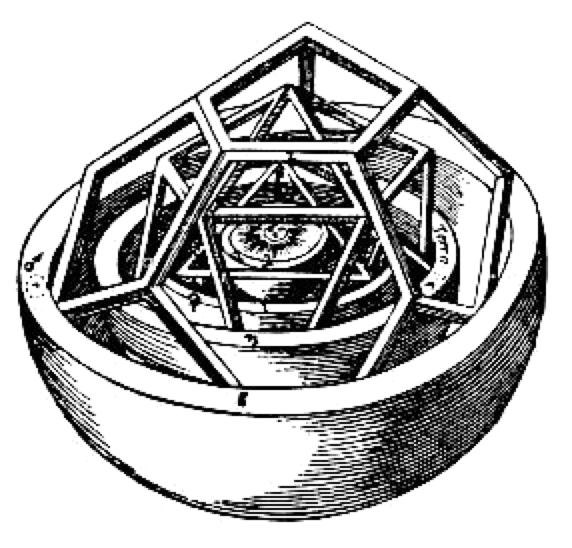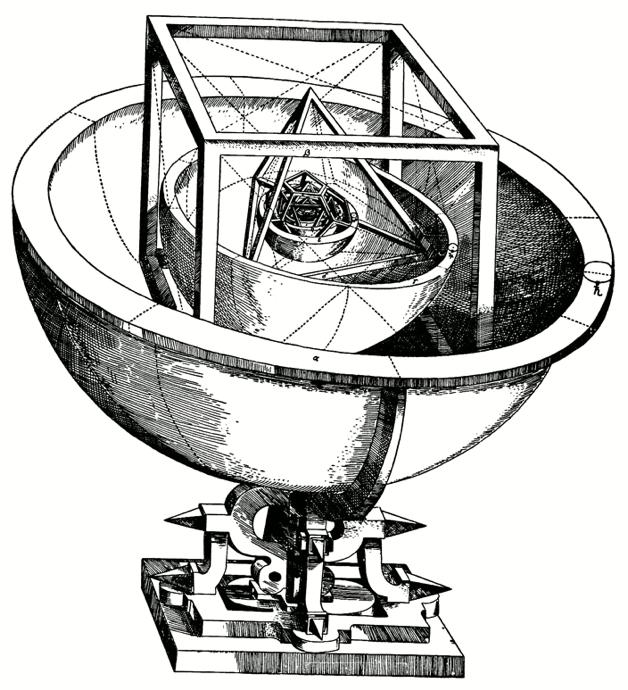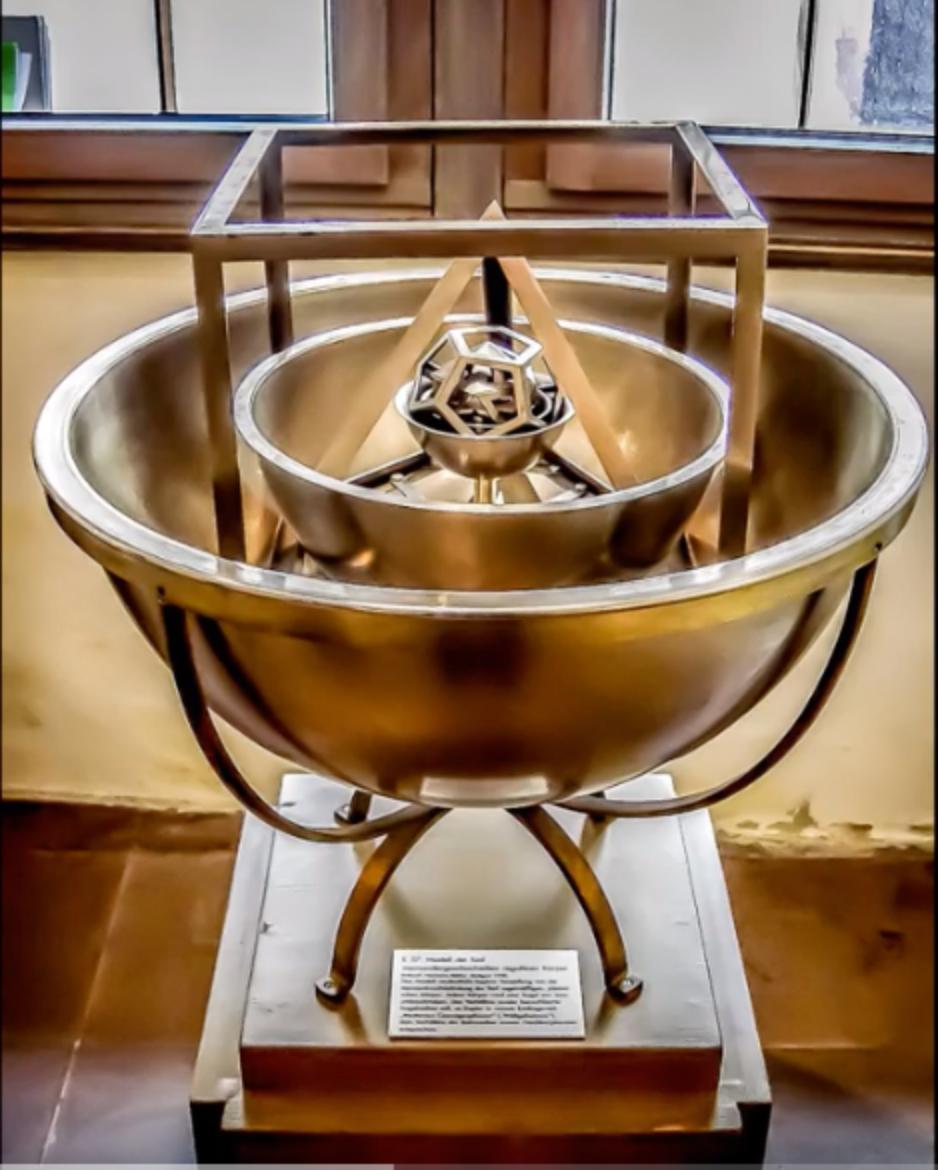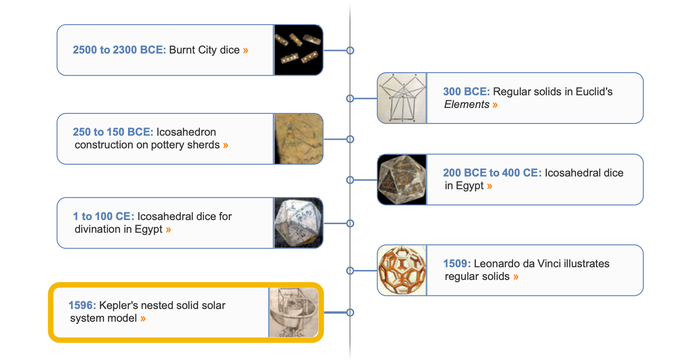1596
Kepler's Planetary System
Nested regular solids model the solar system
Kepler's 1596 work Mysterium Cosmographicum (The Cosmographic Mystery) envisioned a solar system whose dimensions were based on the nesting of the five regular solids in concentric spheres centered on the Sun. It was therefore a Copernican system representing Kepler's belief that God constructed the universe through geometry.

By circumscribing and inscribing the five regular (Platonic) solids on spheres, Kepler obtained a family of nested spheres that was consistent with his geocentric theory of planetary motion. A depiction of this nested polyhedral model appeared in his 1596 work Mysterium Cosmographicum with the title "Tabula III: Orbium planetarum dimensiones, et distantias per quinque regularia corpora geometrica exhibens." While Kepler did not construct a physical model, a number of museums, including the Kepler Museum in Weil der Stadt near Stuttgart, have done so.































































